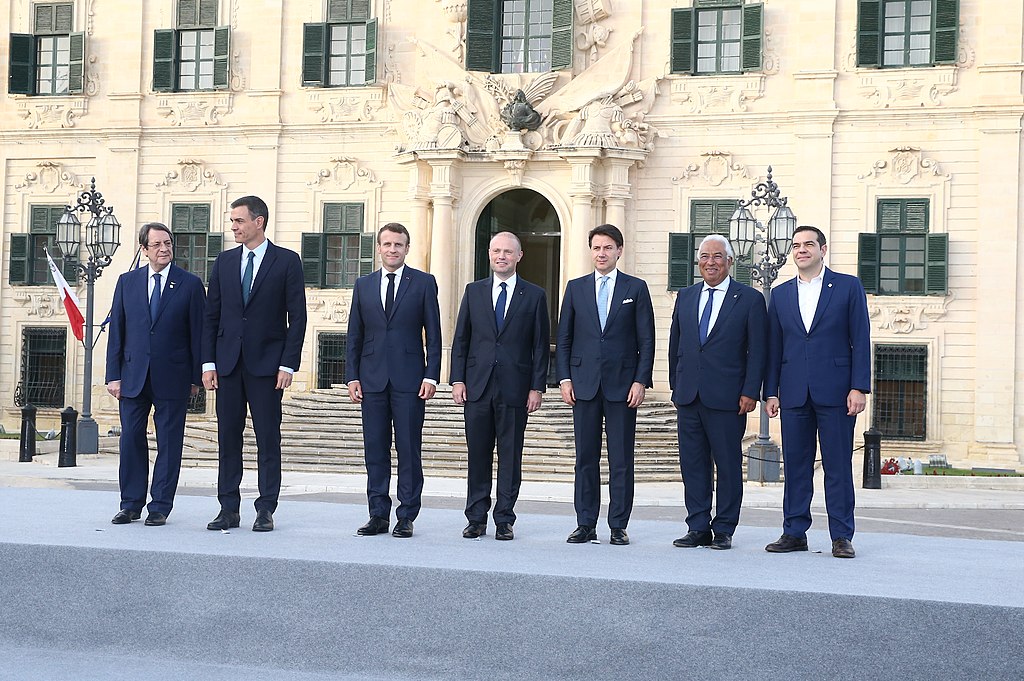
Traditionally, cooperation between the two big economies of the South of the European Union (EU) has consistently failed to reach its potential. Oftentimes, this has been due to ideological discrepancies among the respective heads of states. However, Spain and Italy should form a strong partnership in overcoming the current COVID-19 crisis, and thus enhance the likelihood of their fast and successful recovery. In turn, Spain and Italy’s combined European weight could render their wealthy recovery fundamental for the sound restoration of the EU integration project. Finally, if both countries achieve their Next Generation EU (NGEU)’s objectives, as spelled out in their Plans for National Recovery and Resilience (PNRRs) and their potential success, the EU could consequently strengthen its role in world affairs.
Although similarly hard hit by the same virus, Spain and Italy’s initial response to the COVID-19 crisis remained disconnected, as if they were not part of the same Union. Starting in March 2020, both countries developed a strictly national strategy on how to cope with the crisis. With COVID-19 first spreading at a fast pace in Italy, the country had to rely solely on its means. Other European states, including Spain, watched the occurrence from distance, focusing on implementing measures tailored at preventing the spread in their own territory. More worryingly, when the virus started to circulate in other parts of Europe, this individualistic approach was even more encouraged by rivalry in showing that each country’s way of dealing with the COVID-19 pandemic was the most efficient one. Fortunately, as cases in Europe continued to rise, Member States realized, at the end of May 2020, that a concerted approach could be more efficient in tackling the crisis. Consequently, the EU designed NGEU as a regional framework to address the crisis, letting the Member States to arrange concrete measures for implementation in their PNRRs. This has been very positive.
However, in this context, joint action between Spain and Italy would allow both countries to increase their efficiency in addressing common challenges. This idea has first been stressed in the middle of the pandemic, during the Spain-Italy Summit in November 2020. Here, Spain’s President Sánchez and Italy’s Prime Minister at the time, Giuseppe Conte, agreed on a Joint Declaration designed to advance the countries’ collaboration on issues of common interest. To do so, the document largely stresses the intent of both countries to coordinate positions when in multilateral settings, and to work hand-in-hand in architecting ways to undertake common challenges. Some examples are transitioning to green economies, by taking into consideration wider European strategies; addressing social and territorial gaps, whereby the countries intend to coordinate their national action; targeting digital revolution; strengthening the small and medium sized enterprises, whereby both aim at identifying best approaches and collaborate to participate in wider European projects.
Incidentally, these main highlights for cooperation form the backbone of Spain and Italy’s PNRRs. As Spain and Italy’s PNRRs appear analogous, the above intentions should be renewed by developing joint projects to enhance the likelihood of successful recovery. Cooperating on strategic projects could decrease costs and aid the development of European-level value chains. Particular attention should be given to areas where the respective PNRRs appear to complement one another. For example, while Italy’s plan is highly detailed in its green transition chapter, Spain’s plan appears more advanced in the digitalization chapter. Yet, as recognized by the European Commission and by both countries in their PNRRs, these two chapters are contingent on one another. Thus, Spain and Italy should further their cooperation intents by exchanging efforts and deliverables relating to their most developed part of the plan.
Another example relates to chapter on transportation and mobility. Whilst Italy focuses on strengthening its internal infrastructure, Spain emphasises the importance of corridors connecting with exterior territories. Hence, the two could collaborate to share their best practices for future developments. An approach of the kind would prove extremely beneficial for both countries as it would allow them to profit from an exhaustive and wide-reaching plan. As a result, Spain and Italy’s recovery would prove comprehensive, systematic, and therefore more likely to succeed.
While cooperation and the related augmented prospected recovery might be considered overambitious, recently renewed intents of Spain and Italy’s heads of state reassured the possibility for their success. It is true that the green and digital transformations are not enough to solve the structural issues –such as high rate of unemployment and precarious employment, weak pension, and education systems– that both countries experience. However, as both Sánchez and Italy’s new Prime Minister Mario Draghi largely stressed during the recent encounter during the Spain-Italy Dialogue Forum at the Cercle de Economia in Barcelona, the two countries’ efforts spent on greening and digitalizing their economies will contribute to at least ameliorate such structural problems. Moreover, it is important to recognize the power of Draghi’s presence as leader of Italy. Indeed, it is widely recognized that Draghi’s appointment has increased confidence in Italy’s proclaimed intents at the national as well as European level, and this can be an advantage for Spain too.
Considering their weight in Europe, Spain and Italy’s efficient recovery is fundamental for the revival of the whole EU. Spain and Italy are the third and fourth largest economies in the EU, together accounting for about 25% of the population and GDP of the area. Thus, strengthening the relationship between Spain and Italy would bring stability as well as enhance economic dynamism to the whole European community. This is especially because Spain and Italy’s successful implementation of their PNRRs would concretely help overcoming the traditional divide between Northern and Southern Europe. Indeed, being the first and second receivers of the largest shares of the NGEU funds, Spain and Italy will benefit the most among Member States from efforts to modernize their economies. In turn, this should bring a new convergence between these Southern countries and their Northern counterparts, which are traditionally more advanced. The result would be a tighter and more vigorous economy at the European level, which is key for the EU’s come-back after COVID-19 and would manifest the NGEU’s ambitions. Finally, NGEU’s success is likely to augment the EU’s international profile. As the EU bolsters stability, and increases its economic potential, its power and reputation will expand at the international level. In other words, increasing the EU’s economic competitiveness would boost the EU’s geopolitical role.


